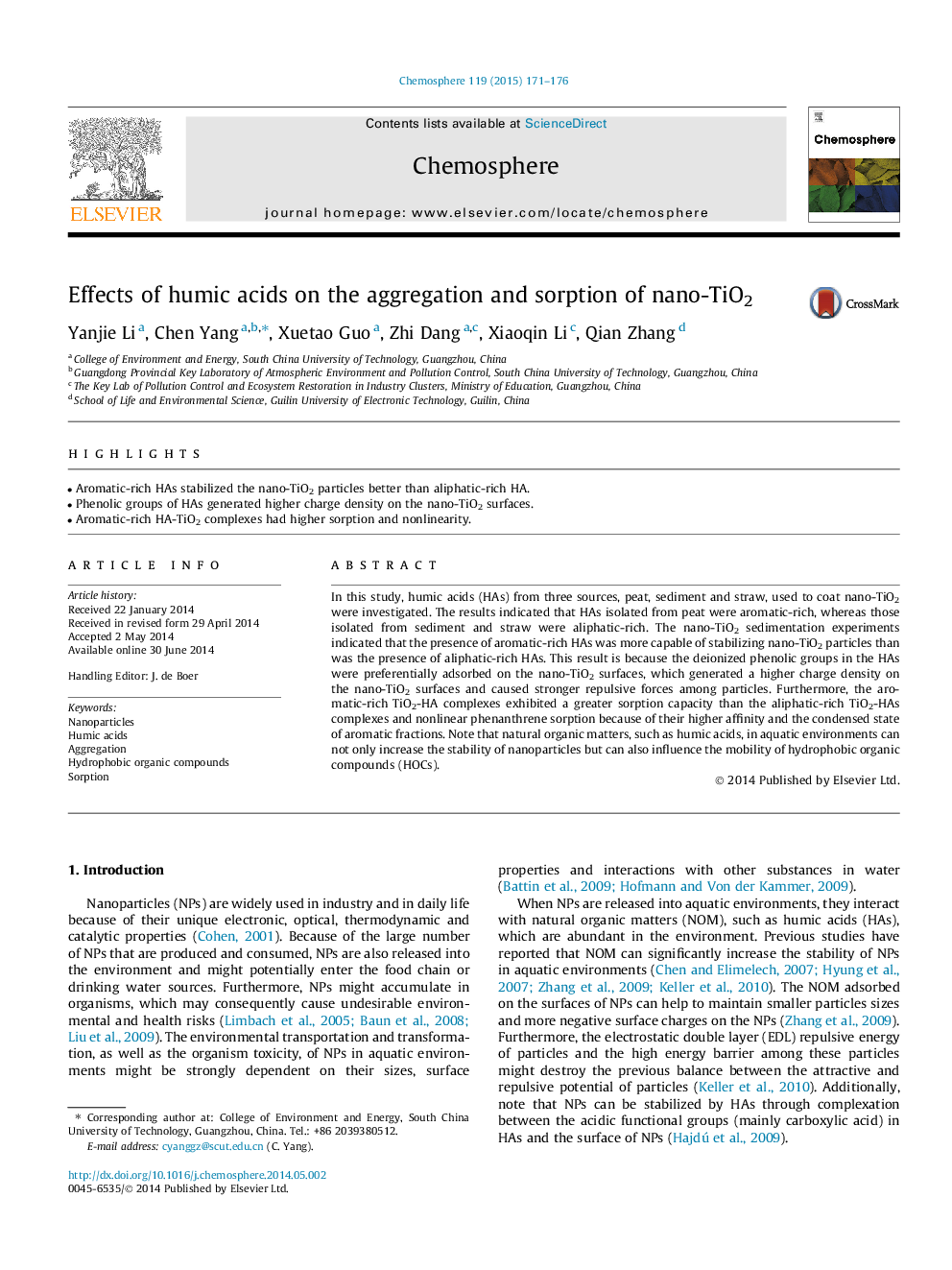| کد مقاله | کد نشریه | سال انتشار | مقاله انگلیسی | نسخه تمام متن |
|---|---|---|---|---|
| 4408617 | 1618852 | 2015 | 6 صفحه PDF | دانلود رایگان |
• Aromatic-rich HAs stabilized the nano-TiO2 particles better than aliphatic-rich HA.
• Phenolic groups of HAs generated higher charge density on the nano-TiO2 surfaces.
• Aromatic-rich HA-TiO2 complexes had higher sorption and nonlinearity.
In this study, humic acids (HAs) from three sources, peat, sediment and straw, used to coat nano-TiO2 were investigated. The results indicated that HAs isolated from peat were aromatic-rich, whereas those isolated from sediment and straw were aliphatic-rich. The nano-TiO2 sedimentation experiments indicated that the presence of aromatic-rich HAs was more capable of stabilizing nano-TiO2 particles than was the presence of aliphatic-rich HAs. This result is because the deionized phenolic groups in the HAs were preferentially adsorbed on the nano-TiO2 surfaces, which generated a higher charge density on the nano-TiO2 surfaces and caused stronger repulsive forces among particles. Furthermore, the aromatic-rich TiO2-HA complexes exhibited a greater sorption capacity than the aliphatic-rich TiO2-HAs complexes and nonlinear phenanthrene sorption because of their higher affinity and the condensed state of aromatic fractions. Note that natural organic matters, such as humic acids, in aquatic environments can not only increase the stability of nanoparticles but can also influence the mobility of hydrophobic organic compounds (HOCs).
Journal: Chemosphere - Volume 119, January 2015, Pages 171–176
